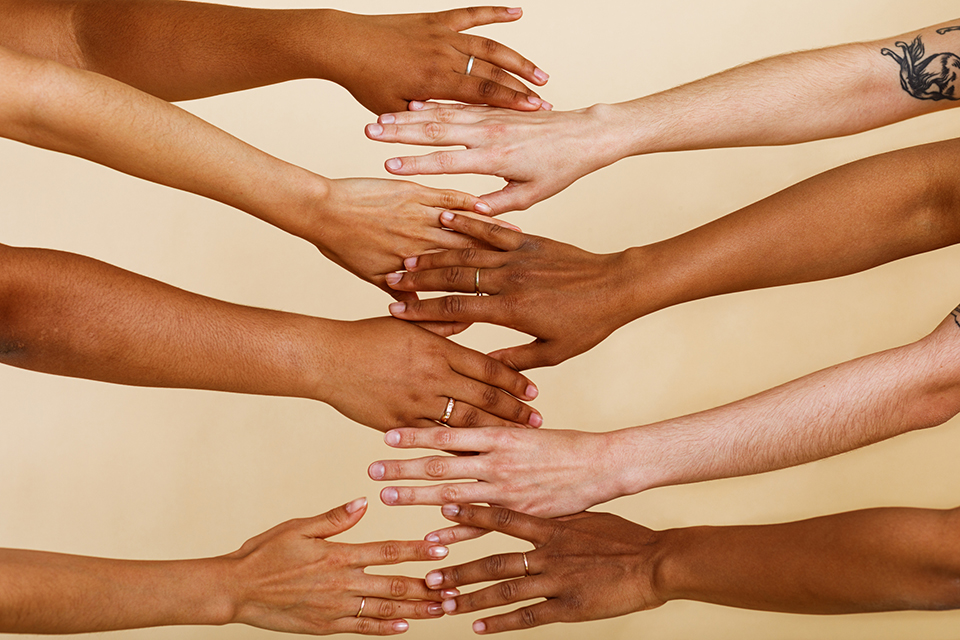Study Finds Dark-Skinned Asian and Latino Teens Report More Discrimination

CSUN researchers studied Latino and Asian-American teens and found that individuals with darker skin tones reported more instances of discriminatory microaggressions. Photo by Youngoldman.
Preferential treatment based on the color of a person’s skin persists, despite Title VII of the Civil Rights Act of 1964, which prohibits discrimination based on one’s race, color, religion, sex or national origin.
While there are studies on the role skin color plays in the treatment of African-Americans, little research has been done on how skin color impacts Latinos and Asian-Americans.
A team of researchers at California State University, Northridge took a look at how the color of their skin impacted 293 Latino and Asian-American teens at two Southern California high schools, and found that individuals with darker skin tones reported more instances of discriminatory microaggressions — subtle comments and actions that convey a negative message toward members of marginalized groups — particularly if they were foreign born.
“When I started looking at the literature, it was amazing to me to find so little on the role skin color plays in the treatment of and perceptions of discrimination within the Hispanic and Asian communities, especially because skin color is an important conversation in both communities,” said Jesse Bozo, the lead researcher on the project who started the study with labmate Michelle Revels-Macaliano and child and adolescent development professor Virginia Huynh shortly before graduating from CSUN in 2015 with bachelor’s degrees in psychology and philosophy.
The results of their findings were published last month in Race and Social Problems.
Huynh called the publication of the study timely, noting the ongoing national discussion about race, as well as reports by demographers that currently more than 50 percent of the babies born in the United States are from minority groups.
“Given that Asians and Latinos are the fastest-growing ethnic groups in the U.S., and that by 2043 more than half of the population will consist of people of color, we really need to understand their experience,” Huynh said. “Historically, most of the research has focused on African-Americans, which makes sense given that overt racist legal and institutional practices have disproportionately affected African-Americans. Given the changing demographics, it’s time attention was given to other minority groups, as well.”
Bozo, Revels-Macaliano, who received her bachelor’s degree in psychology from CSUN in 2013 and her master’s in psychology from the university in 2016, and Huynh began work on the study in 2014, drawing and expanding on data Huynh previously collected for another study.
The Latino and Asian American high schoolers who took part in the study were asked questions on skin color and discrimination, such as microaggressions. The researchers also examined whether being a native-born American, parents’ ethnic and racial socialization and parental acculturalization impacted how the adolescents perceived the association between skin color and the microaggressions.
The researchers found that adolescents with darker skin color reported more microaggressions. In addition, those adolescents not born in the United States reported more microaggressions than their American-born counterparts.
Huynh noted that “colorism,” discrimination based on one’s skin color, is found around the world, in all cultures.
“While there is less research on it, growing up as an Asian-American, it was very clear to me that those with darker skin were seen as ‘less than,’” she said. “Having darker skin around the world suggests that you work in the fields, participate in manual labor, are less educated and are not part of the privileged classes.”
She and Bozo speculate that those adolescents who were born in countries where a person’s skin color defined one’s social class may be more sensitive to the microaggressions they experience in the United States than their American-born counterparts, who may have been raised with the ideal that skin color should not play a role in what an individual can achieve.
“We can’t say there is a causational effect between skin color and microaggressions, but we did see a correlation,” Bozo said.
“There is the possibility discrimination experiences can affect how individuals perceive their skin color,” continued Bozo, who is Latino. “It would be very interesting to conduct a longitudinal study to see if being exposed to discrimination frequently changes how we perceive our skin color. For example, if a teenager who saw themselves as having light-brown skin, experienced discrimination throughout the years, would they still continue to see themselves as light-brown skinned or darker?
“I think having conversations about discrimination are important because most people think only racist people discriminate, and do so overtly,” Bozo said. “However, a lot of people would like to think that we, as a people, don’t discriminate anymore, but it is still part of our culture and people experience it every day, even within our own cultures. And the color of one’s skin, even within our own ethnic groups, can impact how others see us.”

 experience
experience